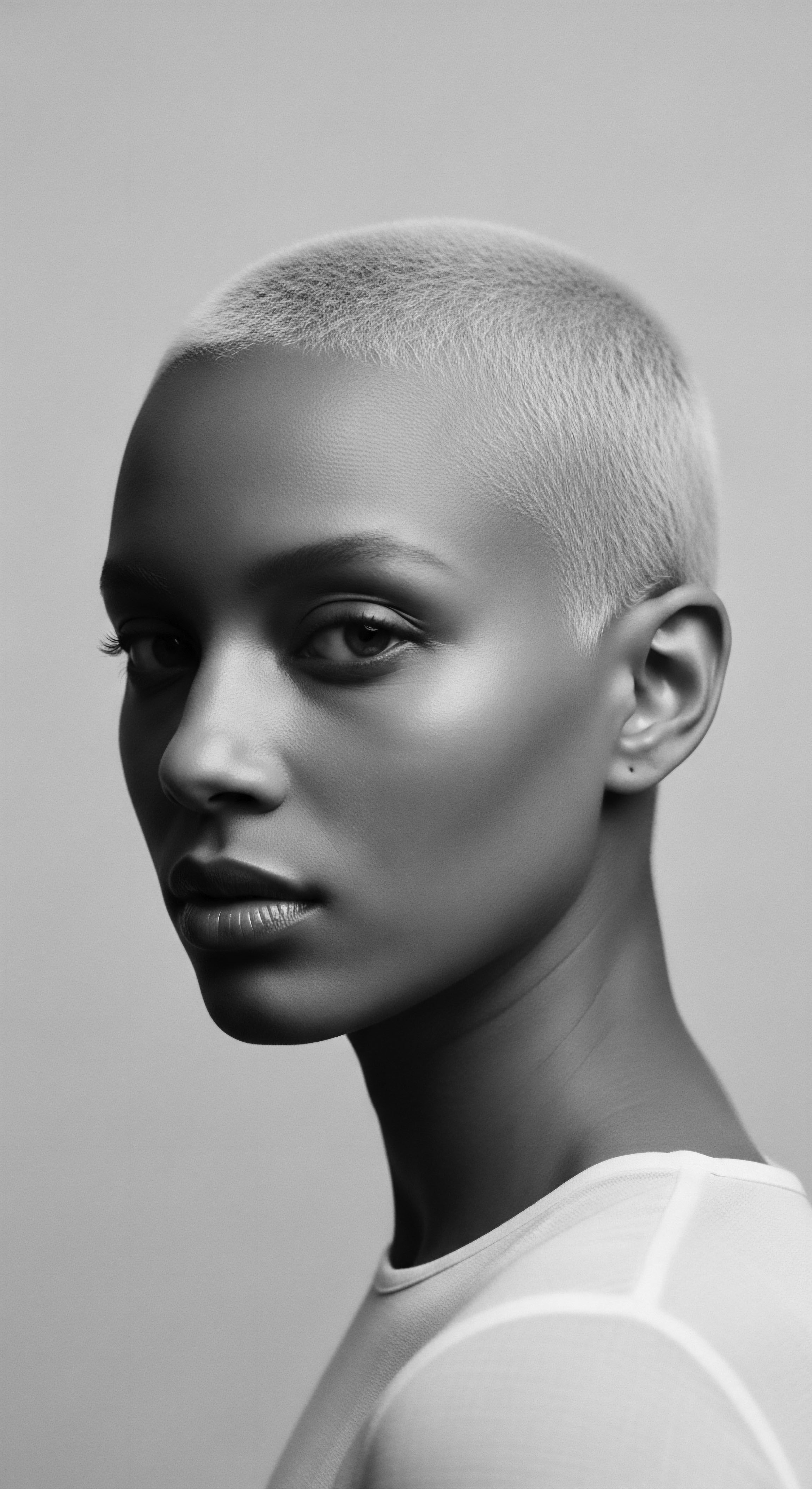
Roots
There exists a quiet hum in the lineage of every strand, a whisper of time and knowing passed down through generations. For those with textured hair, this whisper often speaks of more than mere biology; it recounts narratives of resilience, acts of defiance, and the enduring spirit of a people. How did the Afro pick gain cultural prominence?
Its journey is intertwined with this very narrative, stretching back through millennia, long before its vibrant re-emergence in the twentieth century. To truly comprehend its rise, we must first listen to these echoes from the source, to the primal rhythm of hair itself and the ancient hands that first tended it.

Hair Anatomy and Ancient Wisdom
The very architecture of textured hair, characterized by its varying degrees of curl and coil, forms the foundation of its heritage. Unlike straighter hair types, which often grow in a more cylindrical fashion, Afro-textured hair emerges from an elliptical or flattened follicle, creating the distinctive helical structure. This unique growth pattern grants coils their spring and volume, but also predisposes them to dryness and tangling if not handled with reverence. Ancestral communities understood these intrinsic qualities, developing specialized practices and tools designed to honor the hair’s natural inclinations, rather than suppress them.
From the arid plains of ancient Kush to the fertile Nile Valley of Kemet, what we now call the Afro pick, or a precursor resembling it, made its presence known thousands of years ago. Archaeological digs across these lands have unearthed combs with elongated, wide-spaced teeth, meticulously carved from wood, bone, or even hippopotamus ivory. These were not simply functional implements; they were often adorned with symbolic carvings—birds, bull horns, human figures—reflecting a profound connection to nature, spirituality, and societal roles. (Tulloch, 2014)
The heritage of the Afro pick stretches back thousands of years, with ancient African civilizations valuing combs not only for grooming but as symbols of status and spiritual connection.

Ancient African Hair Cultivation
In early African civilizations, the cultivation of hair held immense social and spiritual weight. Hair styles conveyed a wealth of information about an individual ❉ their familial background, marital status, age, wealth, and even their tribe. This intricate system of communication meant hair care was a communal, deeply significant act, often requiring hours of meticulous work, shared among family and friends.
This collective ritual fostered bonds, passing down both practical techniques and the profound cultural meanings embedded within each style. The tools used, therefore, became an extension of this sacred practice.
The specialized structure of the Afro pick, with its wide gaps between teeth, allows for efficient movement through coily hair without disrupting the curl pattern or causing unnecessary breakage, a principle understood intuitively by early African caretakers. While modern science now explains the mechanical advantages of such a design for detangling and shaping dense, textured hair, the wisdom that led to its creation was born of centuries of observation and practical application within these diverse hair traditions. The very act of using a wide-toothed tool speaks to an ancestral reverence for the hair’s coiled nature, seeking to work with it rather than against it.
- Kush and Kemet ❉ Archaeological findings suggest combs resembling Afro picks date back 6,000 to 7,000 years in these ancient civilizations, often found in burials, signifying their importance in life and beyond.
- Status Symbols ❉ Early combs were not mere grooming tools; they were often embellished and worn as markers of social standing, group affiliation, or religious belief.
- Community Rituals ❉ Hair styling was a communal activity, with elders teaching younger generations intricate techniques, fostering social bonds and preserving ancestral knowledge.
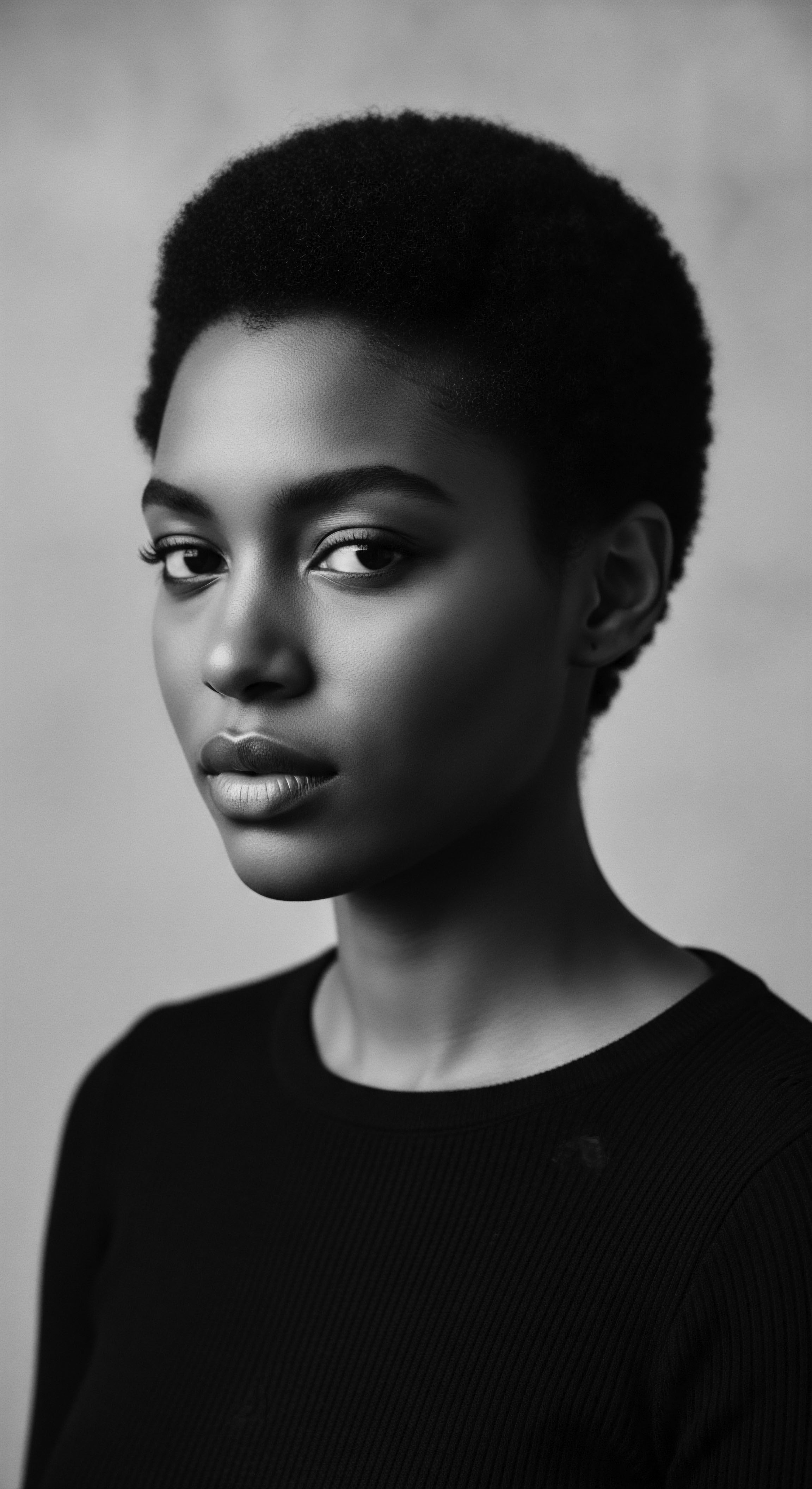
The Essential Lexicon of Textured Hair
Understanding the path of the Afro pick requires a shared vocabulary, one that honors both scientific precision and the historical contexts of textured hair. The terms we use shape our perception, and within the heritage of Black and mixed-race hair, words carry the weight of experience. For instance, the term “kinky” once weaponized to demonize natural hair, is now reclaimed by many as a descriptor of hair’s tightly coiled, resilient nature. The very idea of the “Afro” itself, the hairstyle the pick helps maintain, emerged from a similar reclaiming of identity in the mid-20th century, celebrating hair that grows “up and out.”
The pick’s original purpose as a tool for styling and maintaining voluminous hair forms part of this lexicon. Historically, this tool was simply a comb with longer, wider-set teeth, necessary for navigating the dense, coily textures that define Afro-descendant hair. Its later association with the term “Afro” solidified its identity as the quintessential instrument for this particular expression of natural hair. The choice of tool, then, is not separate from the hair’s structure or the cultural context it embodies.

Ritual
The journey of the Afro pick from an ancient artifact to a globally recognized symbol is a powerful testament to the enduring rituals of Black hair care and the profound transformations it has facilitated. Its prominence is not simply due to its functional design, though that is significant. It is intimately woven into the heritage of styling practices, acts of cultural reclamation, and the very concept of self-definition within Black and mixed-race communities. The pick became more than a tool; it became an accomplice in the tender thread of identity.
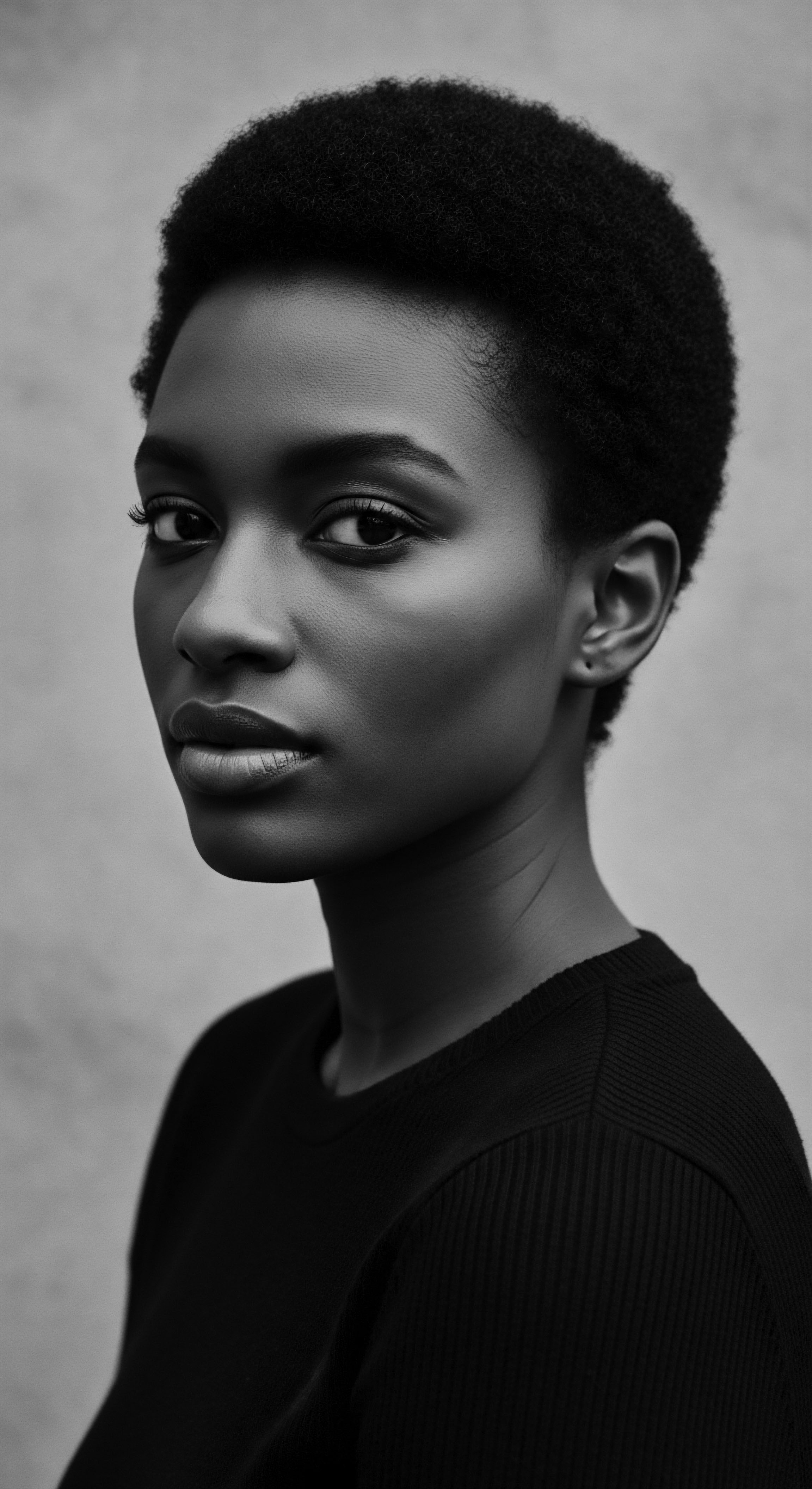
Protective Styling and Ancestral Roots
Long before the advent of chemical straighteners or modern heat tools, ancestral African societies practiced sophisticated methods of protective styling. These techniques, such as various forms of braiding, twisting, and knotting, served practical purposes like safeguarding hair from environmental damage and minimizing tangles, while also conveying intricate social meanings. The Afro pick, or its historical equivalent, played a silent but essential role in preparing the hair for these elaborate styles and in maintaining their structural integrity.
The wisdom passed down through generations prioritized preservation and adornment, often viewing hair as a connection to the divine. (Ouma, 2022)
The “Afro” as a distinct hairstyle, while having ancient echoes of voluminous hair, gained its modern cultural prominence in the mid-20th century. It emerged in the 1950s and truly flourished in the 1960s, coinciding with the Civil Rights and Black Power movements. Prior to this, many African Americans felt societal pressure to straighten their hair to conform to Eurocentric beauty standards for social and economic acceptance. The hot comb, for instance, invented in the late 19th century, offered a means to achieve straightened textures, and its use became widespread.
The Afro pick’s modern rise is inseparable from the mid-20th century movement where Black communities reclaimed natural hair as a powerful symbol of identity and resistance against Eurocentric beauty norms.
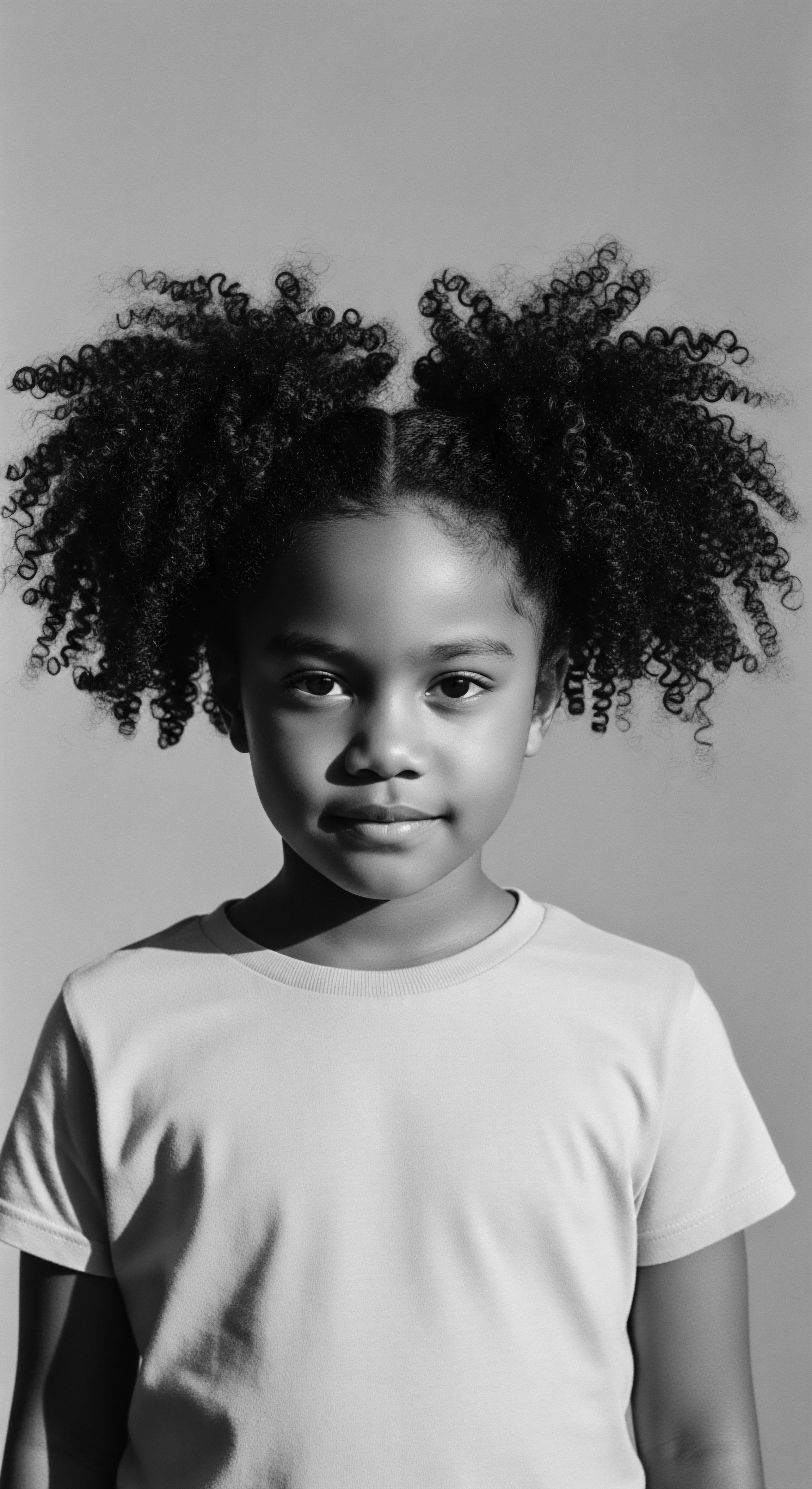
How Did the Afro Pick Become an Identity Marker?
The shift towards natural hair was a deliberate, powerful act of self-assertion. It represented a collective rejection of imposed beauty ideals and a return to ancestral roots and a celebration of inherent Black beauty. The Afro hairstyle, which required specialized tools for its cultivation and maintenance, therefore brought the wider-toothed comb, the Afro pick, back into widespread use. Its longer teeth were perfect for shaping and maintaining the voluminous, unprocessed hair.
The comb’s practical utility for maintaining the Afro hairstyle quickly merged with its symbolic potential. It became an emblem of the “Black is Beautiful” movement, signifying racial pride and identity. Artists and designers, like Germane Barnes, later drew inspiration from the Afro pick, incorporating its imagery into works that explore Black identities and cultural transmission.
| Historical Era Ancient Africa (6000-7000 years ago) |
| Functional Role for Textured Hair Tool for detangling, styling, and maintaining diverse hair textures. |
| Cultural or Symbolic Resonance Status symbol, spiritual connection, tribal affiliation, personal adornment. |
| Historical Era Post-Slavery & Early 20th Century |
| Functional Role for Textured Hair Primarily superseded by hot combs and relaxers for straightening. |
| Cultural or Symbolic Resonance Association with "untamed" hair, contrasting with Eurocentric beauty standards. |
| Historical Era 1960s Black Power Movement |
| Functional Role for Textured Hair Essential tool for shaping and maintaining the Afro hairstyle. |
| Cultural or Symbolic Resonance Symbol of Black pride, racial identity, and resistance against assimilation. |
| Historical Era Contemporary Era |
| Functional Role for Textured Hair Go-to for preserving curl patterns, adding volume, and detangling natural hair. |
| Cultural or Symbolic Resonance Continuing symbol of heritage, self-expression, and personal style, also a collector's item. |
| Historical Era The Afro pick's journey mirrors the evolving relationship between Black communities and their hair heritage, from ancient reverence to modern affirmation. |

A Tool of Transformation and Defiance
The iconic “black fist” Afro pick, which appeared in the 1970s, cemented its place as a symbol of Black power and collective identity. This design directly referenced the defiant Black Power salute, a potent visual statement during the Civil Rights era. Wearing this pick in one’s Afro became a visible declaration, a way of saying “no” to oppression and embracing a distinct cultural legacy.
This period witnessed a strong rejection of hair straightening, a practice that had often been a means of navigating discriminatory societal pressures for employment and acceptance. The Afro pick, therefore, did not just help create a hairstyle; it helped shape a movement. It was carried not just in pockets or bags, but proudly worn in the hair, an extension of identity and a beacon of collective spirit. The pick became a quiet force, a small object that held immense weight in the larger fight for social justice and recognition.

Relay
The Afro pick’s journey from ancient tool to cultural icon is a powerful relay, a passing of meaning and purpose across generations and continents. Its elevation to prominence in the mid-20th century was not a sudden occurrence but the culmination of centuries of historical forces, biological particularities, and the unwavering spirit of a people determined to define their own image. This understanding requires a deeper look, a precise lens on the interplay of social structures, individual agency, and the very biology of textured hair.

The Science of Coiled Hair and the Pick’s Design
From a scientific perspective, the effectiveness of the Afro pick for coily hair is rooted in its structural design. Afro-textured hair, due to its elliptical cross-section and numerous twists and turns along the hair shaft, is prone to tangling and knotting. Traditional fine-toothed combs, while suitable for straight hair, can snag, stretch, and break these delicate coils, leading to damage and discomfort. The Afro pick, with its long, widely spaced tines, minimizes friction and allows for gentle detangling and lifting of the hair from the root, preserving the natural curl pattern and maximizing volume.
This design offers a mechanical advantage that respects the integrity of the hair strand itself. (Tulloch, 2014)
The re-popularization of the Afro pick in the 1960s was, in part, a response to a practical need for a tool that genuinely worked with natural hair. As individuals moved away from chemical relaxers and hot combs—tools that forcibly altered the hair’s structure to mimic straighter textures, often causing damage—they needed an implement that supported the Afro hairstyle. The pick met this need precisely, allowing for the shaping and fluffing of hair that grew outwardly, defying gravity and European aesthetic norms. The invention of the earliest comb resembling this modern form was patented in 1969 by two African Americans, Samuel H.
Bundles Jr. and Henry M. Childrey.
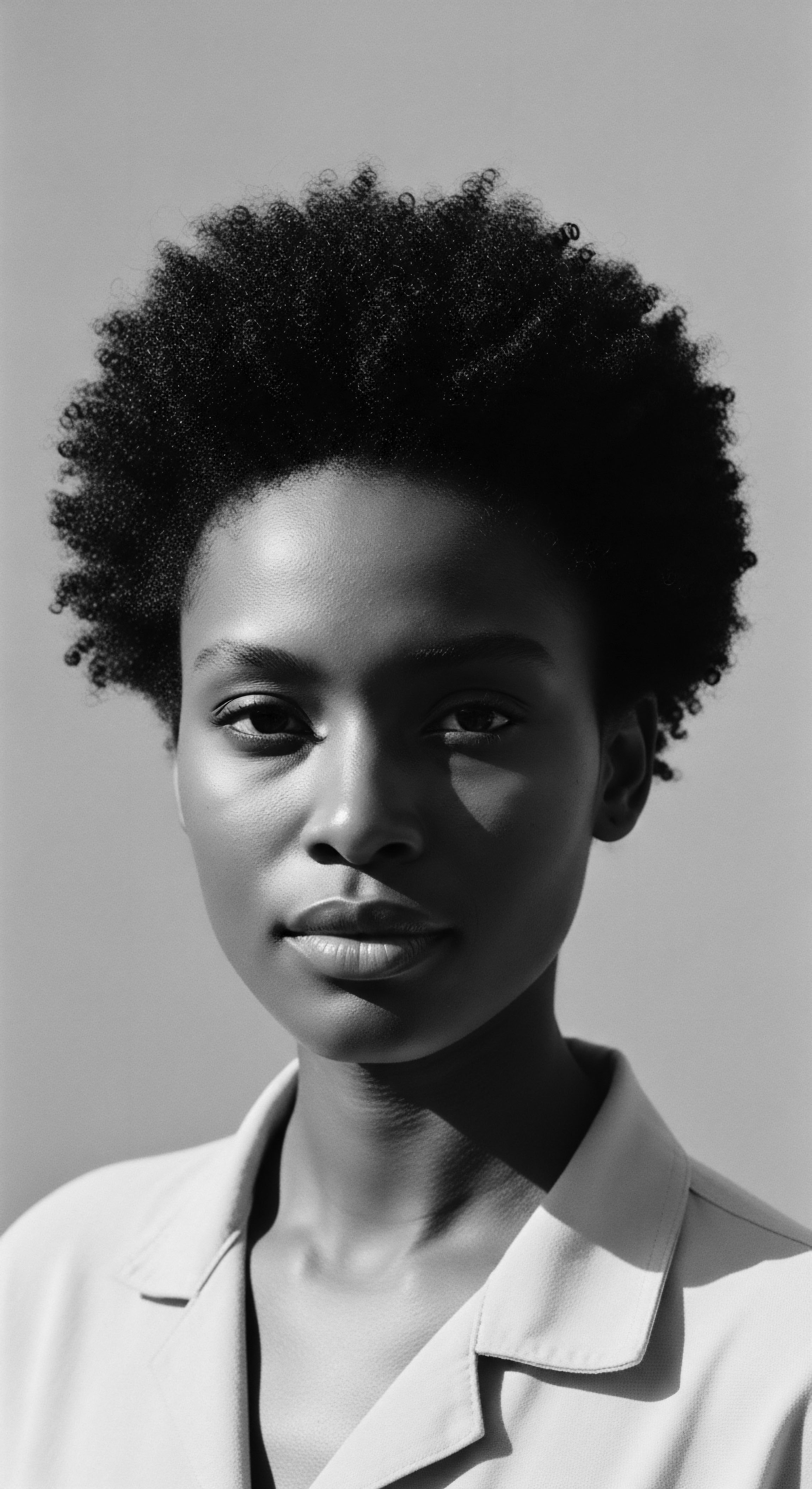
What Societal Challenges Did the Afro Pick Address?
The societal challenges addressed by the Afro pick were significant. For centuries, Black hair had been subjected to ridicule, dehumanization, and stringent policing under the oppressive gaze of Eurocentric beauty standards. The transatlantic slave trade marked a critical turning point, where the elaborate, symbolic hairstyles of African communities were forcibly shorn, a calculated act to strip enslaved people of their cultural identity and sever their connection to ancestral heritage.
Post-slavery, the pressure to assimilate led many Black individuals to straighten their hair using methods like hot combs and chemical relaxers, a practice often tied to perceived social and economic advancement. This created a dichotomy of “good hair” versus “bad hair,” where straight hair was deemed acceptable and natural textures were not. The natural hair movement of the 1960s and 1970s directly confronted this legacy. It encouraged Black people to wear their hair in its unprocessed state, asserting their inherent beauty and rejecting the notion that their natural hair was somehow “unprofessional” or “undesirable.” The Afro pick became a central symbol of this counter-cultural movement, a visible marker of defiance and pride.
The Afro pick became a tangible symbol of resistance, directly challenging centuries of discrimination and forced assimilation tied to Black hair.
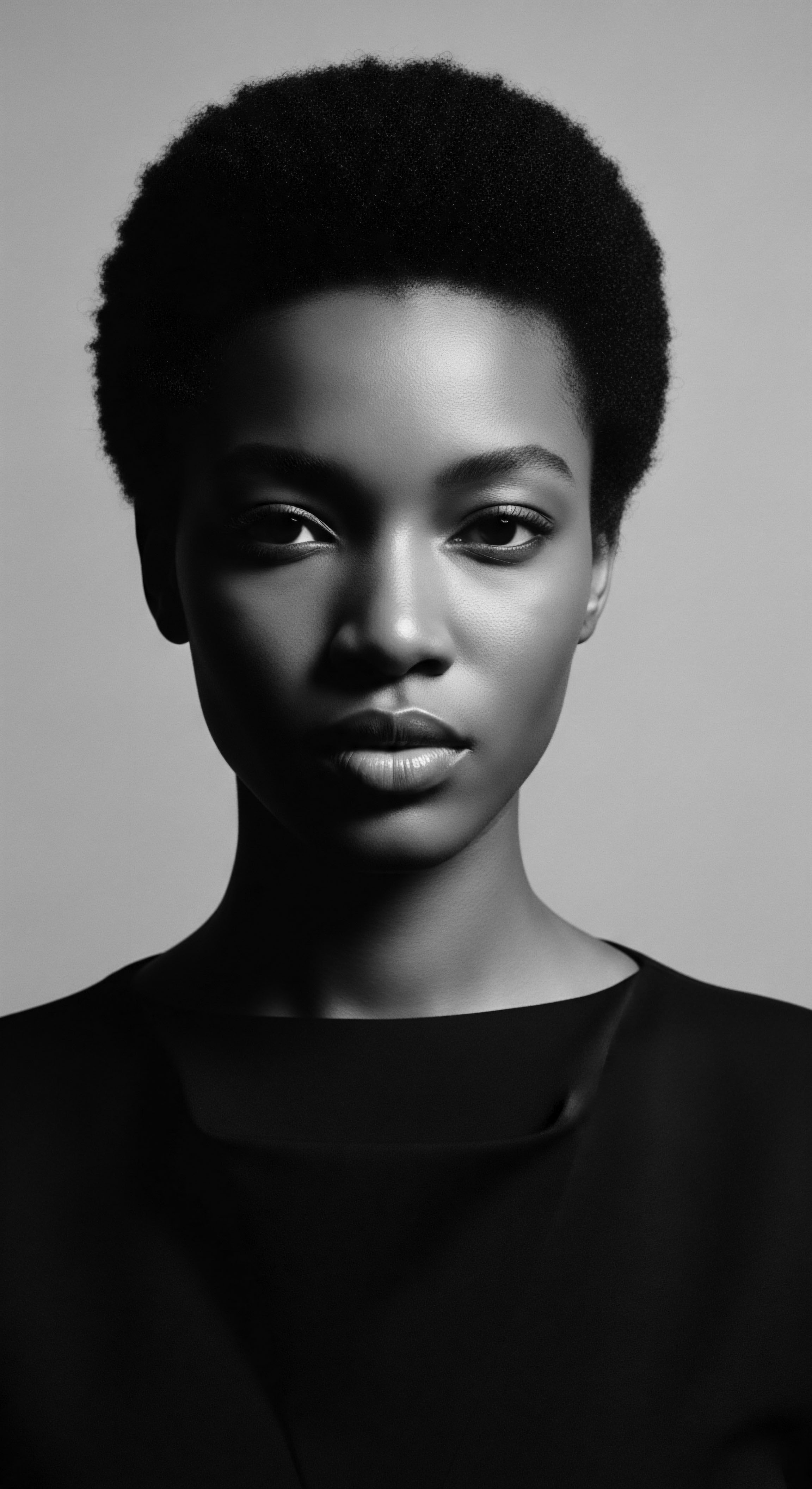
The Pick’s Presence in Law and Art
The cultural prominence of the Afro pick is also evidenced in its appearance within legal discourse and artistic expression. While the Civil Rights Act of 1964 aimed to prohibit discrimination, issues around Black hair, including the Afro, continued to surface in employment and educational settings. The 1976 case of Jenkins v. Blue Cross Mutual Hospital Insurance, for instance, saw the U.S.
Court of Appeals for the Seventh Circuit uphold a race discrimination lawsuit against an employer for bias against afros, asserting that workers were entitled to wear afros under Title VII. This legal battle underscored the Afro pick’s role in maintaining a hairstyle that became a flashpoint for civil rights, demonstrating that a hair tool could indeed become a subject of legal contention due to its profound cultural implications.
In the realm of art, the Afro pick has been celebrated for its symbolism. Artists like Hank Willis Thomas have magnified the pick into monumental sculptures, such as his work “All Power to All People,” which combines the Afro pick with the Black Power salute. This elevation of an everyday object to a grand scale invites contemplation on its wider political and cultural significance, reminding us of the efforts of those who fought for social justice and the ongoing journey towards equality.
The Afro pick also serves as a point of cultural exchange. The presence of Nigerian-manufactured clenched-fist combs, similar to those popularized in the USA, speaks to a unity and shared identity among people of African descent across the diaspora. This global reach highlights the pick’s enduring meaning, extending beyond its point of modern re-invention to connect with wider ancestral legacies.
- Cultural Rejection ❉ The Afro pick stood in stark contrast to the earlier widespread use of hot combs and chemical relaxers, which were instruments of assimilation into Eurocentric beauty standards.
- Black Is Beautiful Movement ❉ The pick became a physical manifestation of the “Black is Beautiful” rhetoric, encouraging acceptance and celebration of natural Black features.
- Political Statement ❉ The iconic black fist design, widely adopted in the 1970s, directly linked the pick to the Black Power movement, making it a tangible symbol of defiance and collective identity.
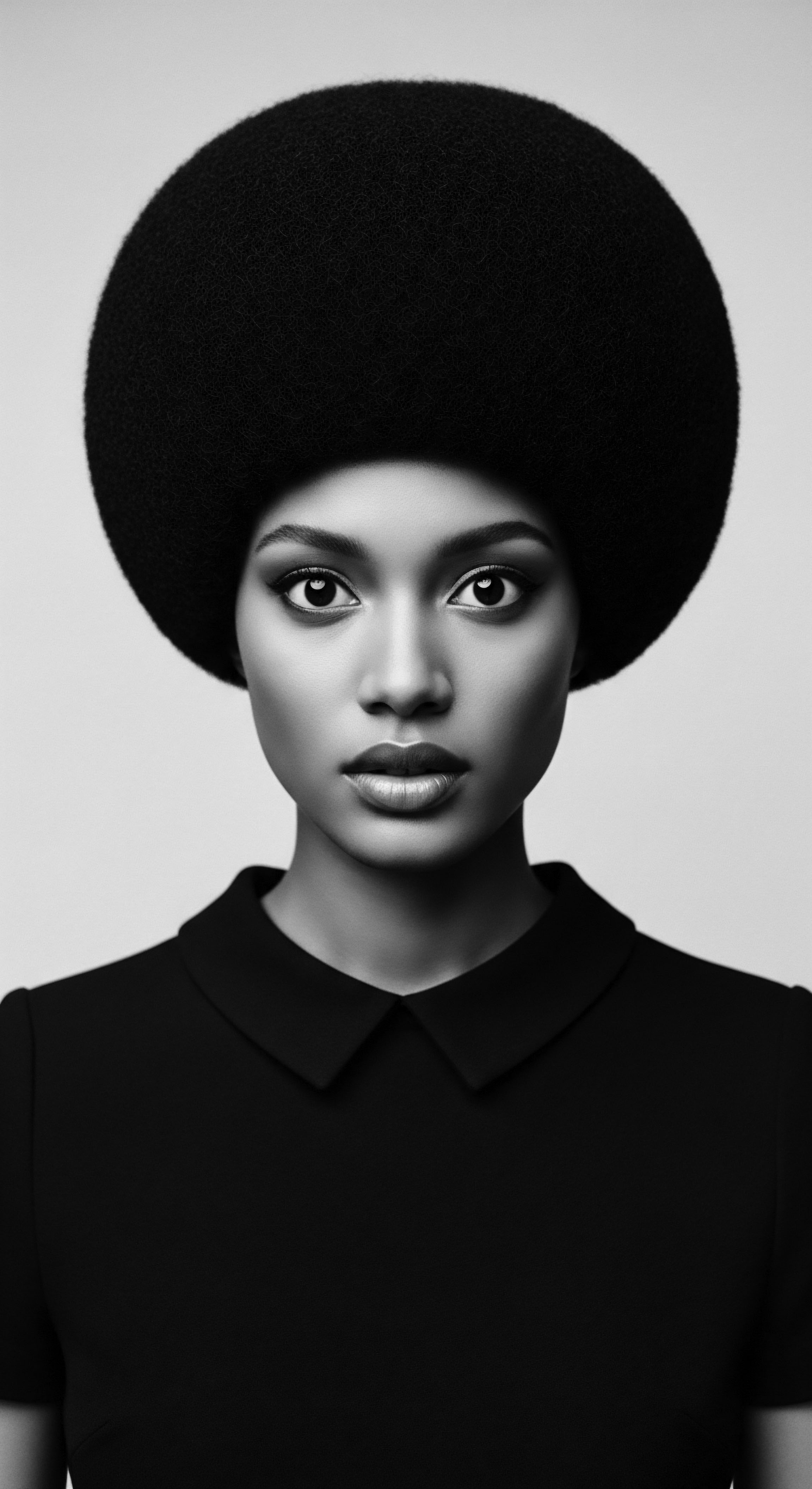
Reflection
The story of the Afro pick, a humble tool with teeth both literal and symbolic, is far more than a mere footnote in the annals of hair care. It embodies a living, breathing archive of textured hair heritage, a testament to the enduring power of ancestral wisdom, and the unwavering spirit of self-definition within Black and mixed-race communities. Its journey, from ancient African civilizations where it was a marker of status and spiritual connection, to its re-emergence as a potent emblem of resistance and pride in the 20th century, speaks to the very soul of a strand.
The Afro pick stands as a reminder that beauty is not monolithic, that identity is a tapestry woven from history and personal choice, and that the simplest objects can carry the deepest meanings. It whispers tales of resilience, of reclaiming one’s narrative, and of the profound interconnectedness between our hair and our collective past. This legacy continues to inspire, inviting us to celebrate the natural architecture of textured hair and honor the vibrant heritage it represents.
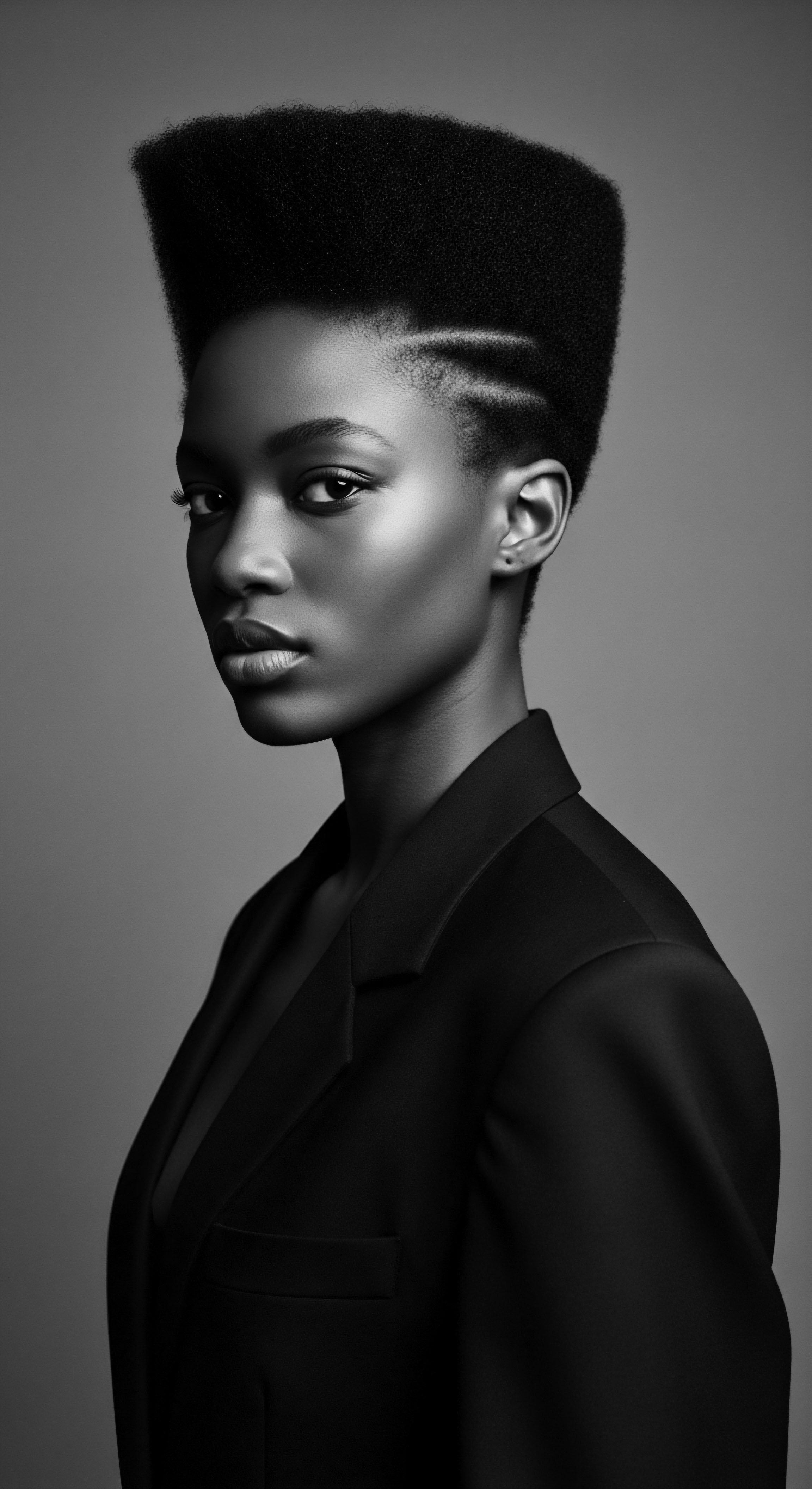
References
- Byrd, A. D. & Tharps, L. (2014). Hair Story ❉ Untangling the Roots of Black Hair in America. St. Martin’s Press.
- Ouma, C. (2022). The connection between hair and identity. Seychelles Nation.
- Tulloch, C. (2014). Radical Objects ❉ The Black Fist Afro Comb. History Workshop.
- Barnes, G. (2020). Uneasy Lies the Head that Wears the Crown. Smithsonian National Museum of African American History and Culture.
- Thomas, H. W. (2017). All Power to All People. Monument Lab.
